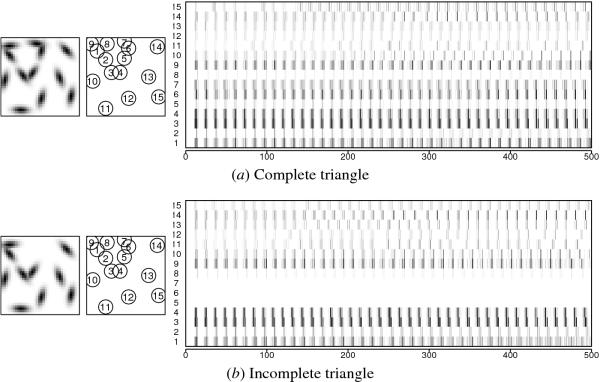
Click on the image to see a PDF version (for zooming in)
Fig. 13.16. Contour completion process in the illusory
triangle. Each element in the triangle is identified by a number 1
through to 9 counterclockwise from the top left vertex, with 2, 5, and
8 denoting the gaps. (a) A complete triangle with gaps in the middle
of each side approximates the central triangular part of the
edge-detected Kanizsa triangle (Figure 13.4). The MUAs corresponding
to gaps are all active and synchronized with the other
inputs. Overall, the synchronization of all nine inputs means that the
system is perceiving a single coherent object (as also demonstrated
quantitatively in Figure 13.18). (b) When one vertex (elements 6 and
7) is removed, areas representing gaps 5 and 8 become almost silent:
The perception of a triangle disappears, as it does in the incomplete
Kanizsa triangle (Figure 13.17). An animated demo of these examples
can be seen at ...
|